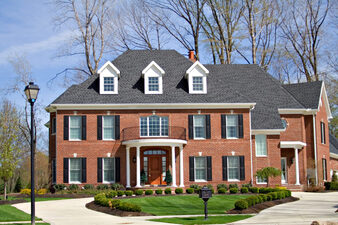 Roofing contractor discusses heat and your roof Charlotte’s top roofing contractor can help you determine how the summer heat can affect your roof. As the sun blazes high in the sky and temperatures soar during the summer months, homeowners often find themselves seeking refuge in the cool comfort of their air-conditioned homes. However, while you may be enjoying the respite from the scorching heat, your roof is enduring the full force of the summer sun's rays. Heat can have a significant impact on the health and longevity of your roof, potentially causing a range of damage that could lead to costly repairs if left unchecked. In this article, we will delve into the ways in which summer heat affects your roof and explore the various types of damage that can occur. The Impact of Summer Heat on Your Roof Roofs are designed to withstand a variety of environmental factors, including rain, wind, snow, and sunlight. While they are built to be durable, constant exposure to intense heat can gradually take a toll on their structural integrity. Here are some ways in which summer heat can affect your roof:
Types of Heat-Related Roof Damage
Preventing and Mitigating Heat-Related Roof Damage While it's impossible to shield your roof completely from the effects of summer heat, there are several steps you can take to minimize the damage:
Emergency Cooling Strategies for Your Roof During Heatwaves While prevention and mitigation are key to preserving your roof's health, there are also emergency cooling strategies you can employ during extreme heat waves to help alleviate stress on your roof and maintain a comfortable indoor environment.
Hire Charlotte’s top roofing contractor Advanced Roofing and Exteriors offers commercial roofing and residential roofing services to Charlotte, NC, and surrounding areas.
0 Comments
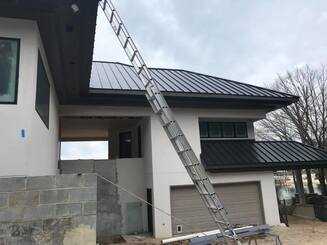 Roof repair contractors can help improve your roof’s longevity Charlotte’s best roof repair contractors can help you assess your roof’s longevity. The longevity of a roof is a crucial consideration for homeowners seeking to protect their investment and maintain the structural integrity of their homes. Roofs are exposed to various weather conditions, temperature fluctuations, and other external factors that can impact their durability. The life expectancy of a roof is influenced by multiple factors, with the roofing material being a significant determinant. The Role of Roofing Material in Longevity Different roofing materials offer varying levels of longevity due to their inherent properties and resistance to environmental stressors. While each material has its advantages and disadvantages, understanding their life expectancies can help homeowners make informed decisions when choosing a roofing material. Factors Affecting Roof Longevity: Several factors can influence the lifespan of a roof, regardless of the material used:
When it comes to choosing the right roofing material, homeowners have a variety of options to consider, each with its own set of advantages and disadvantages. While factors like longevity are crucial, other aspects such as cost, aesthetics, and environmental impact also play a significant role in the decision-making process. Let's take a closer look at some additional roofing materials and their unique characteristics: Asphalt Shingles: Asphalt shingles, the most common roofing material in the United States, typically have a lifespan of 20 to 30 years. These shingles are cost-effective and relatively easy to install, making them a popular choice among homeowners. However, their lifespan can be affected by factors such as climate, maintenance, and the quality of installation. Metal Roofing: Metal roofs, including options like steel, aluminum, and copper, offer exceptional durability and longevity. Metal roofs can last anywhere from 40 to 70 years or more, depending on the specific material and maintenance practices. They are highly resistant to harsh weather conditions, fire, and pests, making them a durable and sustainable choice. Tile Roofs: Tile roofs, often made of clay or concrete, can last for 50 to 100 years with proper care. These roofs are renowned for their distinctive appearance and excellent durability. However, they are heavier than other roofing materials, which may require additional structural support during installation. Wood Shingles/Shakes: Wood shingles or shakes have a lifespan of around 20 to 40 years. While they offer a natural and rustic aesthetic, their susceptibility to moisture, insects, and fire can impact their longevity. Regular maintenance and treatments can extend their lifespan. Slate Roofing: Slate roofs are known for their elegance and can last for 75 to 200 years or more. They are highly resistant to fire, water, and temperature fluctuations, making them one of the longest-lasting roofing materials. However, their weight and cost may be limiting factors for some homeowners. Synthetic Roofing Materials: In recent years, synthetic roofing materials, such as polymer-based shingles, have gained popularity. These materials mimic the appearance of natural materials while offering improved durability and resistance to environmental factors. Their lifespan can vary, but many synthetic options have warranties spanning 50 years or more. Green Roofing: Green or living roofs have gained popularity for their eco-friendly benefits and visual appeal. These roofs are covered with vegetation, providing insulation, reducing stormwater runoff, and improving air quality. Green roofs can extend the lifespan of the underlying roof membrane by protecting it from harsh weather conditions. While maintenance requirements are higher, the environmental benefits make them a compelling option for environmentally conscious homeowners. Solar Roofing: Solar roofing systems integrate solar panels into the roof's design, allowing homeowners to harness renewable energy while providing protection from the elements. These roofs can have a lifespan similar to other roofing materials and may even generate energy savings that offset the initial investment over time. Composite Roofing: Composite roofing materials, such as rubber, plastic, or a combination of materials, offer a balance between cost-effectiveness and durability. They can mimic the appearance of other roofing materials while providing better resistance to weather, UV rays, and impact. Modified Bitumen Roofing: Modified bitumen roofing is a type of asphalt roofing that is highly durable and suitable for flat or low-sloped roofs. It incorporates reinforcement layers for added strength and is known for its resilience against extreme weather conditions. Built-Up Roofing (BUR): Built-up roofing consists of multiple layers of roofing felt and asphalt or bitumen. BUR systems are known for their durability and resistance to water and UV radiation. They are often used on commercial buildings but can also be a viable option for residential properties. Single-Ply Roofing: Single-ply roofing membranes, including TPO (thermoplastic olefin) and PVC (polyvinyl chloride), are popular choices for flat or low-sloped roofs. They offer excellent resistance to UV rays, chemicals, and punctures. While their lifespan can vary, proper installation and maintenance can extend their longevity. Choosing the Right Roofing Material: Factors to Consider When selecting a roofing material, homeowners should evaluate several factors to make an informed decision:
Find Charlotte’s best roof repair contractors Advanced Roofing and Exteriors offers commercial roofing and residential roofing services to Charlotte, NC, and surrounding areas. 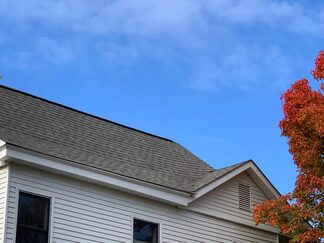 Roof installer can help homeowners understand the benefits of roof vents A roof installer in Charlotte NC and Indian Land SC can help make your home more comfortable in the summer months. As the scorching summer sun bears down upon us, keeping our homes cool becomes a top priority. While many homeowners rely on air conditioning systems to combat the heat, there is another often overlooked solution that can significantly improve indoor comfort without increasing energy bills: roof vents. Roof vents play a crucial role in maintaining a comfortable and energy-efficient home during the hot summer months. In this article, we will explore the benefits of roof vents and how they can help create a pleasant living space during the summer season. Understanding Roof Vents Roof vents are essential components of a home's ventilation system. They are designed to allow air to flow in and out of the attic, balancing the temperature and humidity levels inside. There are several roof vent options available to suit various types of roofs and ventilation needs. Let's explore some of the most popular roof vent options you can install:
When choosing the right roof vents for your home, consider factors such as your roof type, climate, attic size, and ventilation requirements. It's essential to ensure that your chosen ventilation system provides adequate airflow to maintain a comfortable and well-ventilated living space throughout the year. For the best results, it is recommended to consult with a roofing professional to assess your specific ventilation needs and determine the most suitable roof vent options for your home. Here's how home vents can improve comfort in Summer: Enhancing Air Circulation During the summer, attics can become unbearably hot, reaching temperatures well above those outside. When the sun beats down on the roof, it transfers heat into the attic, which then radiates into the living areas below. Roof vents facilitate the escape of this accumulated hot air, allowing cooler air to enter through the soffit vents. This process creates a continuous cycle of air circulation, preventing the attic from becoming a heat trap and, in turn, reducing the heat load on the rest of the house. Reducing Humidity and Moisture Apart from the heat, humidity can also be a problem during the summer months. Excessive humidity can lead to mold growth, wood rot, and structural damage. Roof vents help expel moist air from the attic, reducing the risk of moisture-related issues and improving the overall air quality inside the home. A dry and well-ventilated attic can preserve the integrity of the roofing materials and extend their lifespan. Lowering Energy Costs With roof vents effectively regulating attic temperatures, the strain on your air conditioning system is significantly reduced. When the attic stays cooler, less heat seeps into your living spaces, making it easier for your AC to maintain comfortable indoor temperatures. As a result, your cooling system doesn't have to work as hard, leading to reduced energy consumption and lower utility bills. Eco-Friendly Cooling Solution Roof vents promote natural ventilation, which is a greener alternative to relying solely on air conditioning. By decreasing your dependence on air conditioning, you are effectively reducing your carbon footprint and contributing to a more sustainable environment. Moreover, roof vents don't require electricity to operate, making them an eco-friendly and cost-effective cooling solution. Roof vents are often overlooked but play a vital role in keeping your home comfortable and energy-efficient during the hot summer months. By enhancing air circulation, reducing humidity, and lowering attic temperatures, they can significantly improve indoor comfort while lowering energy costs. Additionally, roof vents contribute to a more eco-friendly lifestyle by reducing your carbon footprint and promoting natural ventilation. Investing in proper roof ventilation is a smart and effective way to ensure your home remains a cool and pleasant sanctuary all summer long. Hire a roof installer in Charlotte NC and Indian Land SC Advanced Roofing and Exteriors offers commercial roofing and residential roofing services to Charlotte, NC, and surrounding areas. 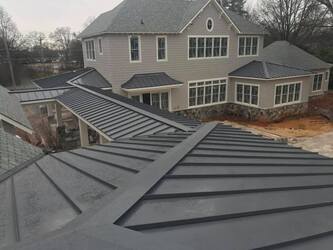 Metal roofing experts can help keep your roof in the best condition Metal roofing experts in Charlotte NC and Indian Land SC can help you maintain your roof in the best condition. Metal roofing has become increasingly popular for its durability, longevity, and eco-friendly nature. However, like any roofing material, metal roofs are not without their share of challenges. Understanding the common issues that can arise with metal roofs and knowing how to avoid or solve them is crucial to ensure the long-term performance and protection of your property. In this article, we will explore some of the typical problems faced by metal roof owners and provide practical tips on how to address them effectively. Condensation: One of the most prevalent issues with metal roofs is condensation. When warm, moist air comes into contact with a cold metal surface, it can cause condensation to form on the underside of the roof. Over time, this moisture can lead to mold growth, wood rot, and damage to the metal itself. Solution: Proper ventilation is essential to combat condensation. Ensure that your attic or roof space is adequately vented to allow the moist air to escape. Additionally, installing a vapor barrier between the insulation and the interior of your home can prevent warm air from reaching the metal roof. Expansion and Contraction: Metal roofs are susceptible to expansion and contraction due to temperature fluctuations. As the metal heats up in the sun, it expands, and as it cools down, it contracts. Over time, this thermal movement can cause fasteners to loosen and seams to separate, potentially leading to leaks and structural issues. Solution: Use fasteners with neoprene washers or gaskets that allow the metal to expand and contract without compromising the roof's integrity. Regularly inspect and tighten loose fasteners to prevent leaks and reinforce seams as necessary. Corrosion: While metal roofs are known for their resilience, they are not entirely impervious to corrosion, especially in harsh environments or regions with high salt content in the air. Corrosion can weaken the metal and compromise the roof's effectiveness in protecting your home. Solution: Choose high-quality metal roofing materials that are specifically designed to resist corrosion. Periodically inspect the roof for signs of rust or corrosion, and promptly address any issues by cleaning affected areas and applying a protective coating or paint. Noisy During Rainfall: Some homeowners complain about the noise generated by raindrops hitting the metal roof, which can be quite loud, especially during heavy rainfall. Solution: To mitigate the noise, you can consider installing additional insulation or soundproofing materials between the roof and the interior of your home. This will help dampen the sound and create a quieter living environment during rain showers. Scratches and Dents: Metal roofs are susceptible to scratching and denting, especially during severe weather events, such as hailstorms or falling debris. Solution: Regularly inspect the roof for any visible signs of damage, and promptly address any scratches or dents to prevent further deterioration. For minor scratches, you can touch up the affected areas with matching paint. In the case of significant damage, consider seeking professional repair services to restore the roof's integrity. Metal roofs offer many advantages, but like any roofing material, they require proper maintenance and attention to prevent common issues from escalating into costly problems. By understanding the potential challenges, such as condensation, expansion and contraction, corrosion, noise, and damage, homeowners can take proactive steps to avoid or solve these issues effectively. Regular inspections, proper ventilation, and using high-quality materials are key to ensuring that your metal roof provides long-lasting protection for your home. In conclusion, metal roofs are a popular and durable choice for homeowners seeking a long-lasting and eco-friendly roofing solution. While they offer numerous benefits, it is essential to be aware of the common issues that can arise and take proactive measures to address them promptly. By following the solutions provided in this article, homeowners can ensure their metal roofs remain in excellent condition and continue to protect their homes for many years to come. In addition to regular inspections and maintenance, it is crucial to work with a reputable and experienced roofing contractor when installing or repairing a metal roof. A qualified professional can help you choose the right materials, ensure proper installation, and offer expert advice on maintenance practices tailored to your specific roof and climate conditions. Lastly, staying informed about the latest advancements in metal roofing technology and products can also benefit homeowners. Manufacturers continuously improve their offerings, introducing new materials and coatings that provide enhanced durability and resistance to various environmental factors. By being proactive and addressing issues promptly, you can enjoy all the benefits of a metal roof without the worry of potential problems. With proper care and maintenance, a metal roof can provide a long-lasting, reliable, and aesthetically pleasing solution for protecting your home from the elements for decades to come. So, invest in your home's future by choosing a metal roof and ensuring it stays in top-notch condition throughout its lifetime. Remember, if you ever encounter complex issues beyond your expertise, don't hesitate to seek professional advice from a qualified roofing contractor. With their help, you can keep your metal roof in pristine condition and have peace of mind knowing your home is well-protected under a durable and resilient roofing system. Work with metal roofing experts in Charlotte NC and Indian Land SC Metal roofing has become increasingly popular for its durability, longevity, and eco-friendly nature. However, like any roofing material, metal roofs are not without their share of challenges. Understanding the common issues that can arise with metal roofs and knowing how to avoid or solve them is crucial to ensure the long-term performance and protection of your property. Your metal roofing expert can help keep the roof in the best condition. Advanced Roofing and Exteriors offers commercial roofing and residential roofing services to Charlotte, NC, and surrounding areas. 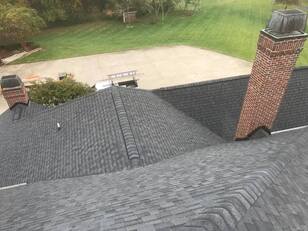 Shingle repair experts can help you make sure you get a top-quality job Charlotte’s top shingle repair experts can guide you on how to notice a bad shingle repair or installation job. A well-maintained and properly installed roof is crucial for protecting your home from the elements. Shingle repair and installation are essential components of maintaining a durable and functional roof. Unfortunately, some contractors may cut corners, leading to subpar work that compromises the integrity of the roof. In this article, we will discuss what bad shingle repair or installation looks like, identify areas where contractors may cut corners, explain the importance of hiring a professional for proper inspection, and provide tips to guarantee a shingle repair job is done correctly. Signs of Bad Shingle Repair or Installation
Areas Where Contractors May Cut Corners
The Importance of Hiring a Professional for Inspection It is highly recommended to hire a professional roofing inspector to assess the quality of shingle repair or installation. Professionals have the knowledge, experience, and tools to identify even subtle signs of faulty workmanship. They can detect hidden issues, assess the overall condition of the roof, and provide unbiased recommendations for repair or replacement. Tips for Ensuring a Quality Shingle Repair Job
Regular Roof Maintenance Even with a top-quality shingle repair or installation, routine maintenance is vital to extend the life of your roof and keep it in optimal condition. Hire a professional roofing company to conduct regular inspections, usually twice a year, to catch any potential issues early on. Addressing minor problems promptly can prevent them from escalating into costly repairs or replacements. Proper Ventilation and Insulation To ensure your roof functions efficiently, proper ventilation and insulation are essential. Adequate ventilation allows for the escape of heat and moisture, preventing the buildup of condensation and mold growth. Proper insulation helps maintain a stable indoor temperature, reducing the strain on your heating and cooling systems. Together, these factors contribute to a longer-lasting and more energy-efficient roof. Use High-Quality Materials When it comes to shingle repair or installation, prioritize the use of high-quality materials. Inferior shingles, underlayment, flashing, or other components may save you money initially, but they can lead to costly problems in the long run. opt for reputable brands and materials that come with warranties from the manufacturer, ensuring that you are covered in case of any defects. Stay Involved During the Process While hiring a professional roofing contractor is crucial, it doesn't mean you should be detached from the process. Stay involved and communicate with the contractor throughout the repair or installation project. Ask questions, seek updates, and request to see the progress. A reputable contractor will be transparent and keep you informed every step of the way. Check for Certifications Roofing contractors who hold certifications and memberships in reputable industry organizations showcase their commitment to quality workmanship and staying up-to-date with the latest roofing practices. Look for certifications from organizations like the National Roofing Contractors Association (NRCA) or the Roofing Contractors Association of Your Country/Region. Obtain and Verify Insurance Before work commences, verify that the roofing contractor has adequate insurance coverage. This includes both liability insurance and workers' compensation insurance. Insurance protects you from liability in case of accidents or damage during the repair or installation process. Final Inspection and Approval Once the shingle repair or installation is complete, perform a final inspection with the roofing contractor. Look for any signs of incomplete or unsatisfactory work. Address your concerns and request any necessary adjustments or fixes before providing final approval and making the payment. Hire Charlotte’s top shingle repair experts Advanced Roofing and Exteriors offers commercial roofing and residential roofing services to Charlotte, NC, and surrounding areas. 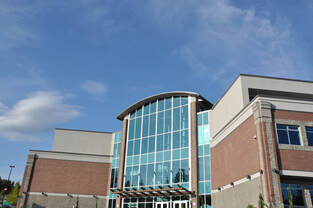 Commercial roofer uncovers the dangers of staying during an ongoing reroofing project Charlotte’s top commercial roofer can help you decide whether to stay or leave during reroofing. Living in a business building while it is being reroofed can present numerous challenges and potential dangers. While it is technically possible to remain inside during the roofing process, it is generally not recommended for various reasons. In this article, we will explore the dangers of being in a building undergoing reroofing, the potential health risks associated with roofing materials, and why it is usually best to vacate the property during the roof installation. Dangers of Being in a Building Undergoing Reroofing:
While the decision to vacate the property during reroofing might inconvenience business operations temporarily, the benefits outweigh the drawbacks:
If, for some reason, vacating the property during reroofing is not feasible, there are essential safety precautions that must be followed to protect the occupants and employees:
If vacating the property during reroofing is the preferred option, there are several factors to consider when arranging for temporary relocation:
After the reroofing process is completed, conduct a thorough inspection to ensure the safety and integrity of the new roof. Verify that all safety measures have been removed and the building is suitable for reoccupation. Hire Charlotte’s top commercial rooferAdvanced Roofing and Exteriors offers commercial roofing and residential roofing services to Charlotte, NC, and surrounding areas. |
AboutLearn about your options when it comes to roof repair and roof installation in Charlotte. Archives
July 2024
|
 RSS Feed
RSS Feed
